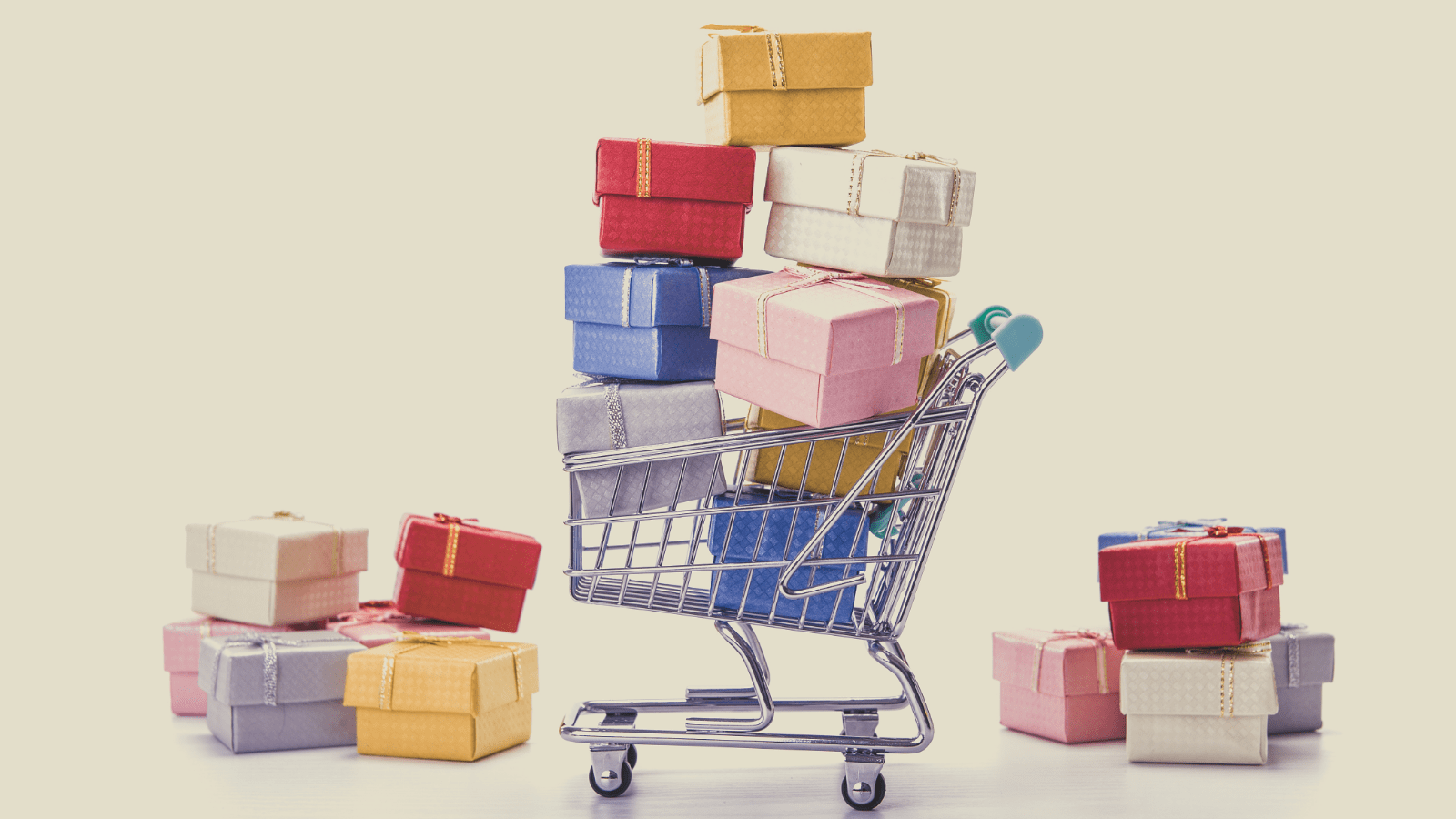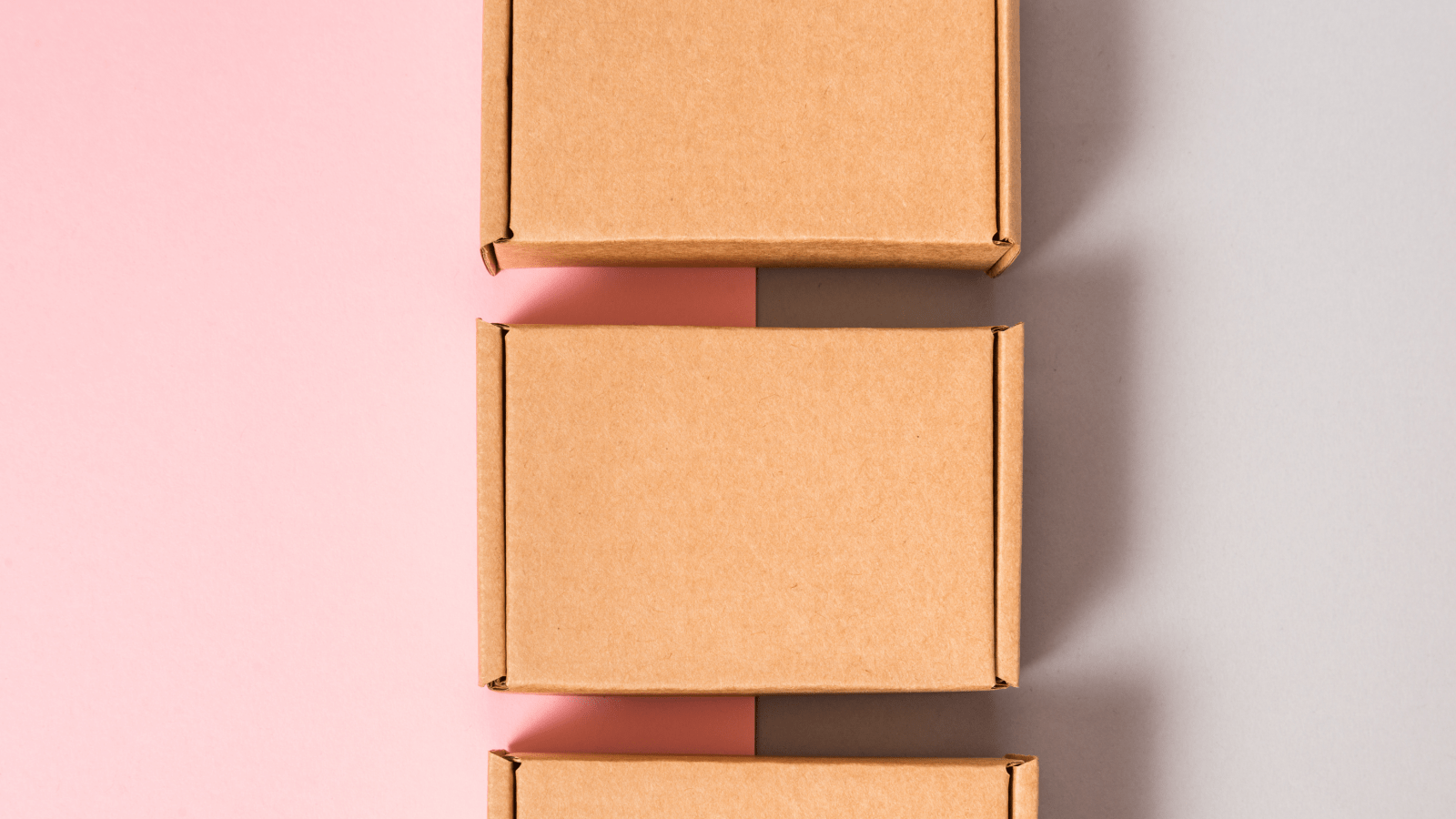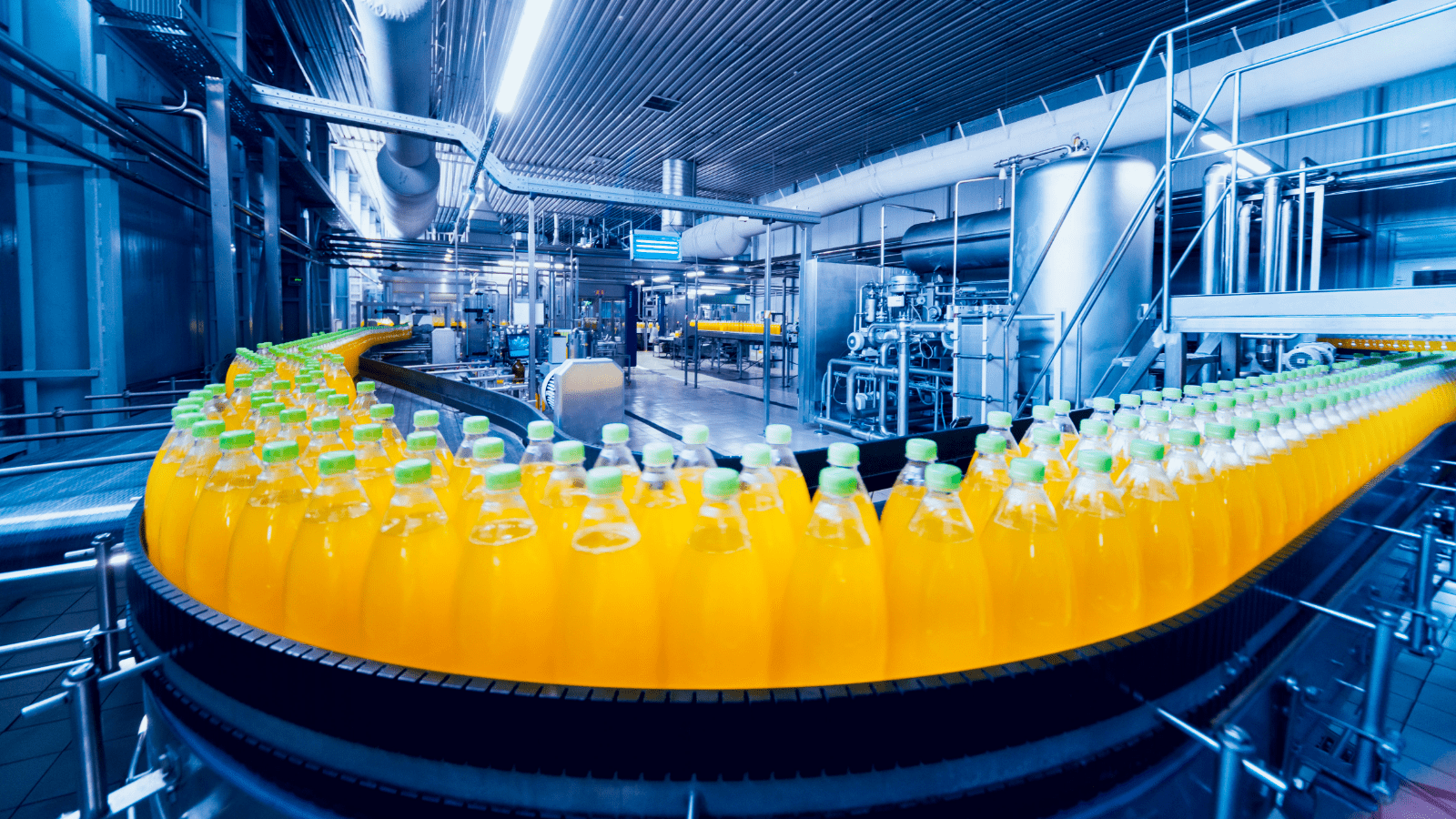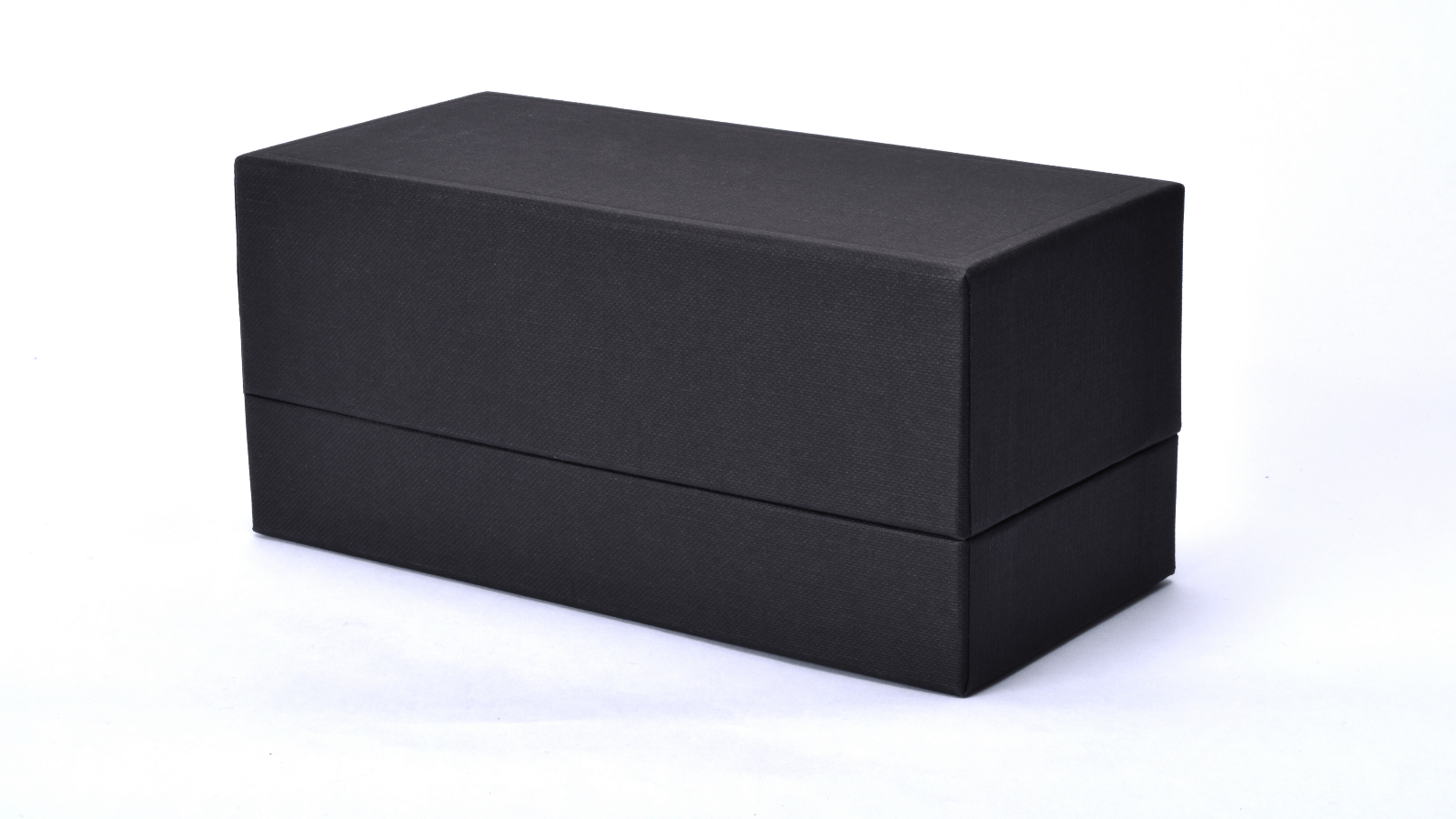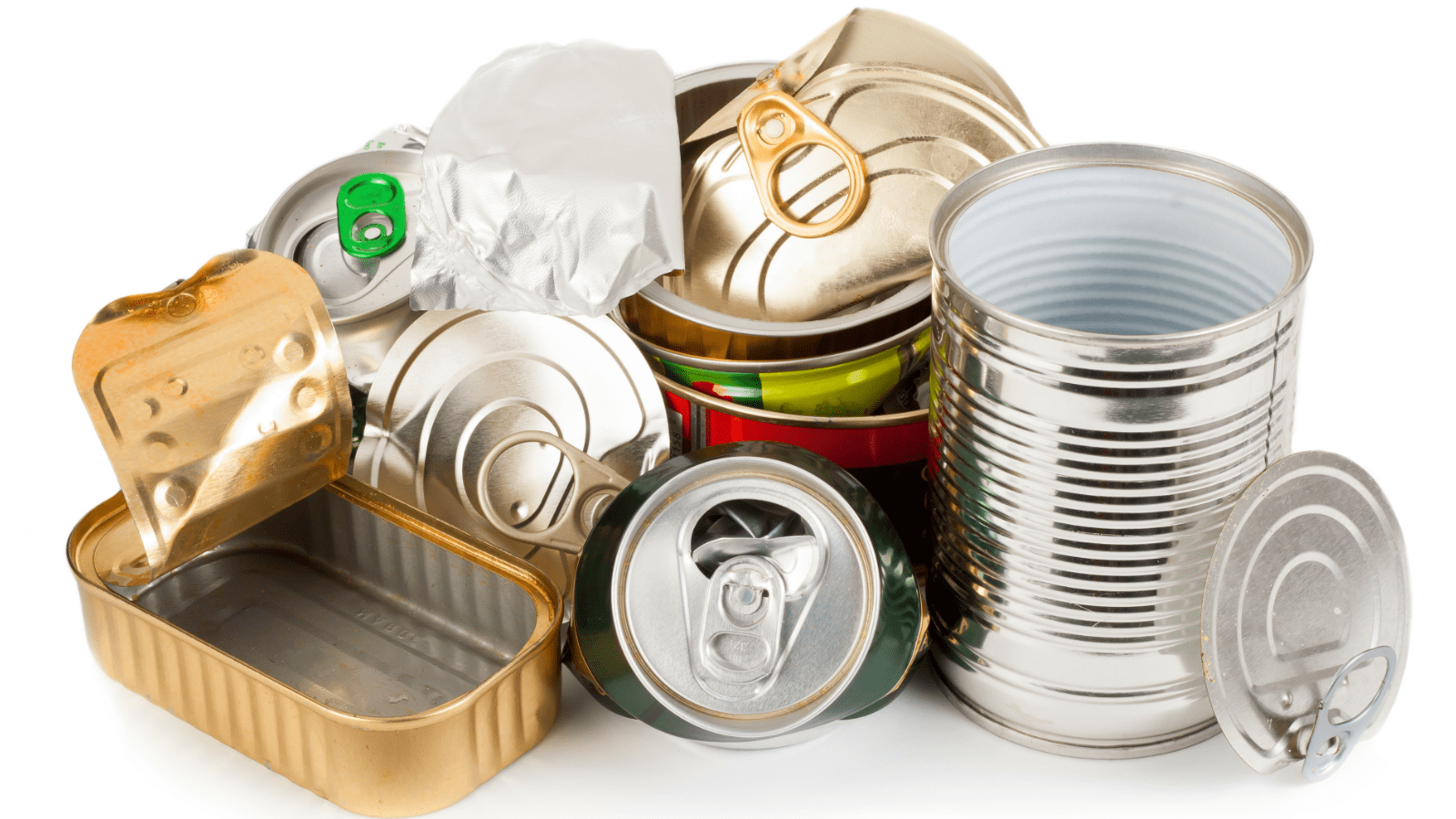Vendor Consolidation in Packaging: Why One Supplier Beats Ten
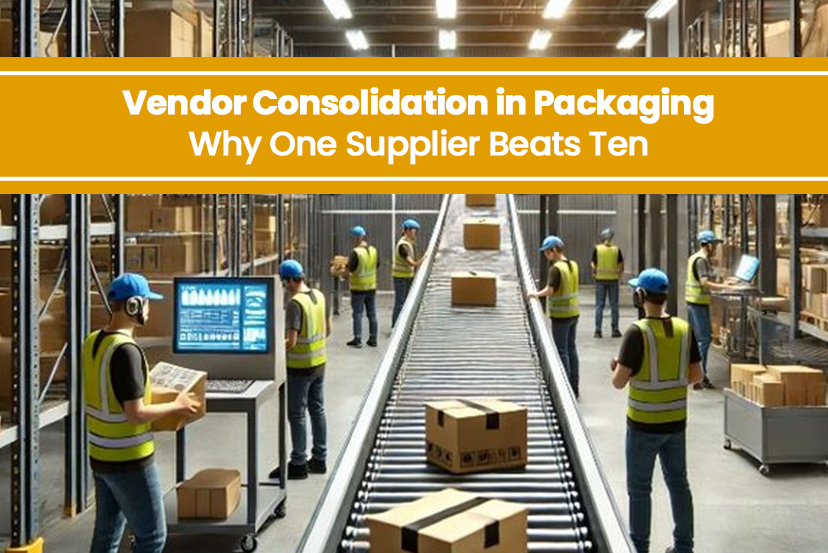
Vendor Consolidation in Packaging: Why One Supplier Beats Ten
Like everything in your business, managing several packaging suppliers is part of the normal order of operations. Right up until the moment it isn’t, and you realize how much it is costing you in time, money, and your mental well-being to control. One vendor boxes, one vendor labels, one vendor wraps, next thing you know, you are working on the impossible task of invoice reconciliation, stash the quality is up to par, and endless omnidirectional invoice chasing.
Ring a bell? This is a a-1 case scenario for “too few cooks in the kitchen”
“If you only have one supplier, pivot the entire shipping logistics for the vendor’s shipping problem. Untangle the entire solution from the shipment of the vendor.”
Too many suppliers are:
- Conflicting delivery schedules that slow your operations
- Inconsistent packaging quality that frustrates customers
- A mountain of paperwork and admin that steals focus from what really matters
- Missed volume discounts because your purchases are spread too thin
The simple act of gaining volume discounts saves a lot of effort, time, and, in the worst case, un-optimization.
More intelligent companies are uniting. This is the only thing that really works in communication: consolidation.
Why One Supplier is More Than Just Convenience
Business communication with one packaging supplier is like sticking with a single coffee shop, mentally framing the barriers to switching other denouncing other coffee vendors as limbs to one’s main body, and keeping the other vendors as ‘parts’ that do not connect to the body of coffee culture.
Vendor and its single packaging supplier enjoy, and, hence, bring to market, innovatively framed buzzword terms rationalizing vertical integration as single-source convenience and as a one-stop shop:
- Unmatched Value: Block contracts, where a buyer is locked into a minimum offtake, are a widely used profit maximization strategy, utilized in addition to value-based pricing, in value chain systems that embrace single vendor integration.
- Unsurpassed Excellence: One supplier handles a complete server, and hence, has to manage server spillover, on which a coffee vendor has little control, which means server parts and assembly are unified with the packaging vendor.
- Streamlined Communication: The need for fewer invoices and contracts to manage is reduced, and hence, with direct savings on administrator expenses, spending time defending the invoices and contracts is considered a trivial savings.
- Fast Cash: Hend to dispenser simplification results in cash to cash in moments to sip the coffee.
- More Additive Solutions: A valued engineer bringing synergy with others elongates the new component system in the value chain of the supplier.
The key is not to single out the absence of non-linked coffee shops as limbs, and embrace all other coffee to solo-frame holding cups as limbs to value-chain optimized systems.
What About Variety? Don’t You Need Multiple Vendors?
People are often skeptical about working with a single supplier out of concern that it may limit choice or flexibility. However, it seems that many packaging partners today offer a full suite of solutions under their roof, from eco-friendly boxes to custom inserts and specialty tapes.
Many of these suppliers have long-standing partnerships with raw material suppliers and are able to easily access nearly anything that is needed. Additionally, these suppliers’ pragmatic understanding of your products and processes means they are able to offer smarter packaging solutions that are much more efficient than what most people would expect when working with disparate suppliers.
Yes, you still get a lot of variety. You get it with less disarray and more tailored service.
The Real Numbers: What Consolidation Can Do For You
Let’s discuss outcomes, because it is not a theory that there are positive outcomes to vendor consolidation. Firms have reported positive outcomes, which include the following:
- Lower Administrative Expenses: A team of people managing the same contract is more likely to work efficiently than a team of people managing multiple contracts. Many report that operational efficiency increases by more than 15% when there are fewer contracts.
- Less Excess Packaging Waste: Accurate forecasting leads to better bulk ordering, which directly correlates to less obsolete material.
- Increased Negotiating Leverage: When the budget is consolidated, you are able to negotiate better pricing and terms because of the larger spending capacity.
- Improved Quality and Delivery: Improved supplier collaboration translates to decreased levels of damage and enhanced predictability of shipping schedules, and these are two very important metrics of customer satisfaction.
A mid-sized retailer disclosed eliminating eight packaging vendors to two leading to almost 10% in savings on packaging in the first year, and the cost in time to procure packaging was also decreased significantly.
How to Consolidate Without the Stress
If vendor consolidation sounds appealing and ‘doable,’ you are not the only one. Finding new suppliers and especially eliminating old ones can seem like a lot of work. It does not, however, need to be this way, as simplifications can be made:
- Map Your Current Spend: Reconfigure your budget to include all essential variables: what are you spending on what, and who are you spending it with. Identify any duplications or voids.
- Define Your Must-Haves: Clearly document all features you need from a packaging supplier. This can include anything from sustainability to speed, or the ability to produce specialty products.
- Perform Tenders: Identify and approach one or two suppliers who can meet all your requirements, and procure samples, brochures, or other relevant materials from them.
- Pilot First: Try consolidating one category or product line initially, so you can test the relationship and iron out any issues.
- Communicate Openly: Share your goals, timelines, and challenges with your supplier. Collaboration is key to success.
Heads Up: Engage Your Backup Vendors
Wholesalers having one supplier is one thing, but having backup vendors on contract and ready to go is much more prudent. There are disruptions in supply chains. There are unexpected spikes in demand. There are quality-assurance issues. Alternative vendors insulate your business against these shocks.
Wrapping It Up: One Supplier Can Change the Game
No, a single supplier for your packaging does not equate to a loss in revenue. There is also the question of making the whole packaging approach strategically automated and hassle-free.
Reduction in the number of suppliers makes the communication more straightforward, quality assurance more consistent, and the business partner supplier better understands the business. Increased focus on growth revenue, minimizing stress, and more time to spare is the winning recipe.
When your packaging is accompanied by a constant feeling of juggling, it is very likely time to evaluate your suppliers. Handing complete control to a single vendor tends to smooth the process.
How E-Commerce Giants Use Tailored Packaging for Faster Deliveries
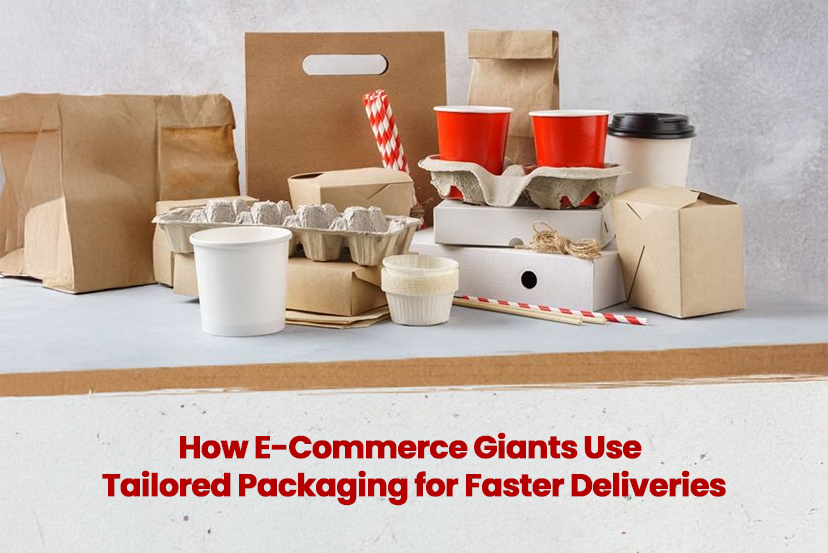
How E-Commerce Giants Use Tailored Packaging for Faster Deliveries
Recall your most recent order placed online. Was the package delivered within the expected timeframe? Was it simple to access? Did the item sustain any damage? Beyond the proactive approach to smart packaging about which you mentioned, there lies a sophisticated world of the world’s most successful companies, Amazon, Alibaba, and other members of the pack.
The supremacy of these e-commerce companies does not only depend on the order’s products, it also greatly depends on the overall customer experience. The order packaging also plays a significant role.
The Best Part: Custom fit packaging not only hugs the merchandise, it also reduces delivery times, lowers overall shipping charges, and even adds value to Mother Earth.
So how do they do it? Let’s unpack the strategies that make this work.
The Challenge: Shipping Speed vs. Cost vs. Protection
On the surface, it seems simple-get products from the warehouse to the doorstep as fast as possible. But it’s actually a tricky balancing act.
- Deliver too slow? Customers get unhappy and might never come back.
- Use generic oversized boxes? You waste space, pay more in freight, and risk product damage.
- Over-pack to protect products? Costs go up, and more waste piles up.
That’s where tailored packaging shines. It’s about getting the perfect fit every time.
How Tailored Packaging Works
Tailored packaging means creating company-specific boxes, mailers, and protective materials associated with each item or a group of items. Instead of a one-size-fits-all approach, think about one that is “just right.”
Here’s what the giants are doing:
- On-demand box manufacturing: Reduce wasted space with real-time volume boxes that are custom-made to each order’s dimensions.
- Modular inserts and dividers: Used to keep products tight and secure, even during transport.
- Lightweight materials: Stricter yet lighter materials lower the cost of shipping due to decreased weight.
- Smart Automation: Speeds up the order of packaging by minimizing the size errors caused by the machines,which cut, measure, and assemble the packaging materials.
Why Tailored Packaging Speeds Up Delivery
- Less bulk, more boxes per truck: Custom dimensions allow for maximizing the use of space in planes and trucks, which in turn speeds up and lowers the cost of delivery.
- Simplified Handling: Packages that are not overly bulky or heavy streamline order sorting in fulfillment centers and warehouses.
- Reduced Breakage with Fewer Returns: Packages that are secure allow products to arrive undamaged, which minimizes the return shipping cost, along with the re-shipping delay.
- Streamlined sorting and scanning: Uniform and properly sized boxes are faster in automated sorting systems.
Behind the Scenes: Tech Powering Tailored Packaging
E-commerce leaders invest heavily in technology to make tailored packaging possible:
- 3D Scanners & AI: Automated systems measure products in milliseconds to select or create the right packaging.
- Data Analytics: Tracking shipping damage, returns, and customer feedback helps improve packaging choices over time.
- Integrated Supply Chains: Packaging production happens close to fulfillment centers to reduce lead times.
Audit Your Current Packaging
Amazon, for example, reports that their custom packaging solutions have cut waste by millions of pounds and reduced freight costs significantly. Meanwhile, Alibaba uses smart packing algorithms to optimize box sizes, speeding up deliveries during peak shopping seasons like Singles’ Day.
Smaller companies can learn from this playbook without huge budgets-starting with simple design reviews and small automation steps.
How You Can Start Using Tailored Packaging
- Audit Your Current Packaging
Check your records to find out which poorly optimized box sets are available for automation. These sets are a goldmine for saving costs, as well as box sets that do not utilize a fraction of the box space. - Shipping Box Optimization
Pick your top 5 or 10 merchandise items and prepare tailored box designs. These new designs will save costs for shipping boxes as well as the included packing. - Acquire Measurement Devices
With basic tools like a digital caliper or scanner, you can get very precise measurements of a product. - Engage with And Flexible Suppliers
Seek out flexible suppliers who can handle small custom runs, automate some packing, or help you with other specialized packing. - Analyze All of Your Data And Metrics
Monitor shipping costs, damages, and customer feedback to improve your packaging decisions.
What Savings Can You Expect?
| Strategy | Time to See Results | Savings Range |
| Custom Box Testing | 1–3 months | 5–10% |
| Automation & Sizing | 3–6 months | 10–20% |
| Damage Reduction | 2–4 months | 5–15% fewer returns |
| Freight Efficiency | 4–8 months | 10–25% |
Challenges to Watch For
- The costs involved in investing in technology or switching suppliers can be high.
- Training employees and modifying packing systems can be tedious.
- Not all items perfectly fit within standard tailored-made designs; number will still require specialized designs.
The fundamental approach should be to start with a small scope of work, measure exactly, and expand on what works.
Final Thoughts: Tailored Packaging Isn’t Just A Trend-It’s A Difference Maker
In e-commerce, a lot of time and money can be saved with efficiently tailored packaging done right. It can improve customer satisfaction, protect items in transit, reduce waste, and increase delivery speed.
Intelligent and efficient packaging decisions can benefit any business, regardless of its size and scale. As such, you should integrate the packaging as part of the product experience.
In e-commerce, time and money are two of the most valuable resources, and every second and every penny saved can have a major influence.
The Complete Guide to Primary, Secondary, and Tertiary Packaging
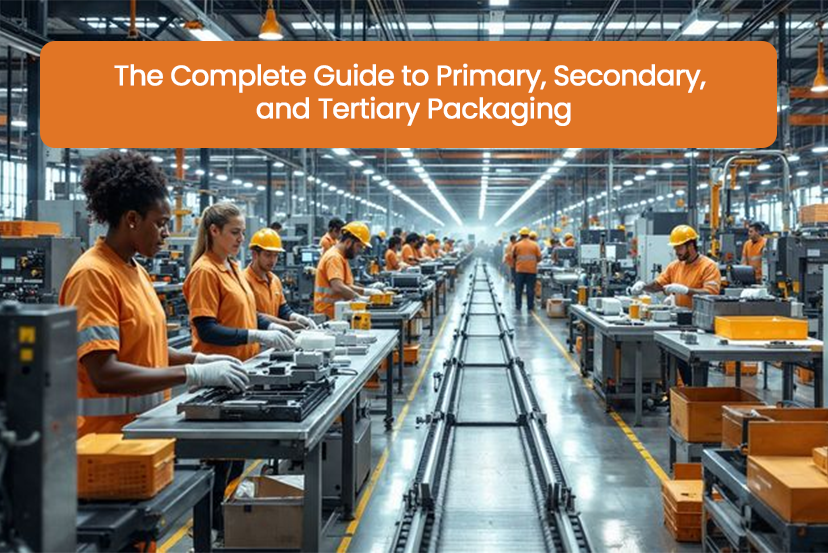
The Complete Guide to Primary, Secondary, and Tertiary Packaging
Wait-Which Packaging Is Which Again?
We have to admit that distinguishing between different types of packaging can rapidly become confusing. Primary, secondary, and tertiary levels can rapidly sound like a textbook chapter no one has requested.
Nonetheless, doing all of them correctly, consequently, being deliberate with each and every step and stage is crucial, especially in managing the costs, protecting the product, and ultimately the user’s experience.
This is why, in order to provide better customer service, protect the product, and move rapidly while still saving money, it is important to understand the relevant context in which different levels of packaging exist.
Let’s get into it.
First Up: What Are the 3 Levels of Packaging?
Think of packaging in layers. Each layer plays a different role, and they all work together to move your product from factory to shelf (or doorstep) safely and efficiently.
1. Primary Packaging – The Closest to the Product
We have to admit that distinguishing between different types of packaging can rapidly become confusing. Primary, secondary, and tertiary levels can rapidly sound like a textbook chapter no one has requested.
Examples:
- A bottle filled with shampoo
- A tablet in a blister pack
- A pack of chips
Why it matters:
- Keeps the product sanitary, sealed, and functional
- Contains legal information, expiration dates, and instructions for use
- Enhances shelf appeal and user experience
For the pharma or food industries, primary packaging must also comply with strict hygiene and safety regulations. It’s about more than aesthetics—it’s about legality and consumer trust.
2. Secondary Packaging – Grouping & Branding Layer
This is the packaging that combines several primary units for both logistics and branding.
Examples:
- A cardboard box containing six tubes of toothpaste
- A printed box that surrounds a bottle of perfume
- A tray of bottled water that is shrink-wrapped for easy transport
Why it matters:
- Simplifies storage, stacking, and shipping
- Provides extra space for branding
- Offers more protection during transport
- Streamlines barcode scanning, bundling, and tracking
Secondary Packaging is often the level at which businesses can begin optimizing for cost without impacting the product or customer experience. Design, volume, and materials all play a significant role.
3. Tertiary Packaging – Layer for Transporting and Bulk Handling
The final layer focuses on the ease and effectiveness of bulk handling and shipment. Although not often appreciated by the clients, it is instrumental to the shipment of products without any form of quagmires.
Examples:
- Pallets
- Stretch wrap
- Large shipping cartons
- Crates or bulk boxes
Why it matters:
- Protects goods in transit
- Maximizes transport efficiency
- Helps prevent loss and damage
- Key to warehouse and 3PL workflows
For businesses operating on an extended domain, a tertiary packaging layer can help minimize carbon, operational costs, and improve overall business efficiency.
How These Layers Work Together
Let’s bring in a practical case scenario for this:
Cough syrup in a bottle.
- The bottle is the primary packaging
- The printed carton it comes in is the secondary
- The corrugated box used to ship 48 cartons to a pharmacy is the tertiary packaging
Each layer has a distinct design and purpose. However, cooperation is crucial. If a layer contains a different form of construction, it is bound to create overspending or damaged cargo and pose compliance problems.
Why You Should Care (Even If You’re Not in Packaging)
This is the part where it gets a bit more interesting.
Regardless of whether your area of focus lies in operations, procurement, sustainability, or finance, understanding how these disciplines function both individually and in tandem between silos is essential as it provides:
- Cost savings: Is it possible there is excessive packing or redundant protection for products in multiple layers of packing?
- Sustainability: Can materials used in secondary or tertiary packing be decreased without compromising safety?
- Effectiveness: Do your packing formats cause delays in the warehousing system or increase freight expenses?
- Customer experience: Does your primary package impress your customers or is it just functional?
Smart businesses are using packaging reviews to cut waste, improve margins, and simplify logistics across the board.
A Quick Cheat Sheet
| Packaging Layer | Touches Product? | Main Purpose | Key Users |
| Primary | Yes | Protects product, informs user | Consumers, regulators |
| Secondary | No | Bundles, brands, protect | Retailers, logistics |
| Tertiary | No | Bulk handling, storage, transport | Distributors, 3PLs |
Where Optimization Usually Begins
If it is a matter of increasing efficiency or decreasing costs, this is where the majority of companies focus their efforts:
- Tertiary packaging: Changing out heavy boxes for lighter-weight corrugates, optimizing palletization, and improving dunnage systems.
- Secondary packaging: Rightsizing boxes, eliminating redundant empty space, and over-structuring inner cartons.
- Primary packaging: While this may be complicated to change, it is still worth investigating to achieve savings or extend shelf life.
There is no requirement to change everything in one go. A thorough evaluation of packing and shipping one product line or one use case is often a good start, and then gradually increasing focus as you gather tangible evidence is most effective.
Final Thought: Do not place Packaging at the Bottom of Your Priority List
If you are only considering packaging at the end of the product life cycle, you are likely missing out on a huge potential.
There’s a distinct part for each layer-primary, secondary, and tertiary. How about when they are crafted in isolation? That’s when costs start creeping in, damage rates rise, and shipping inefficiencies proliferate.
The companies overcoming this challenge are not merely concerned about packaging-they are concerned about packaging strategy. And it is paying off.
Because, packaging is not a mere box. At the end of the day, packaging is a business lever.
Sustainable Packaging for Regulated Industries (Pharma, Food, FMCG)
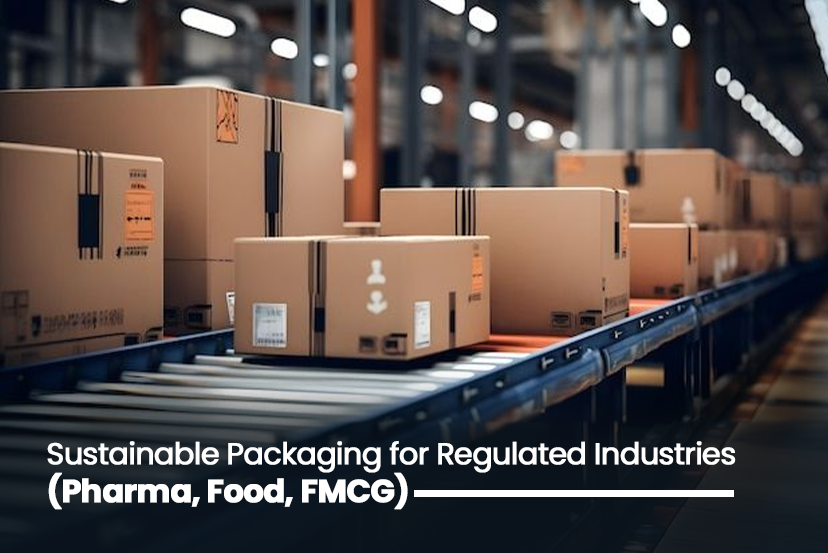
Sustainable Packaging for Regulated Industries (Pharma, Food, FMCG)
Sustainable Solutions for the Pharma and Food Industries
Professionals in the pharma, food, and FMCG sectors understand better than anyone how packaging regulations apply in these fields. Recycling packaging materials won’t do the trick. Packaging must also consider shelf-life, safety, contamination control, and tampering. These considerations can lead compliance teams to conclude that sustainability is impossible to achieve.
However, industry leaders are successfully adopting sustainable packaging. They apply innovative strategies that comply with regulations while minimizing material misuse, waste, and costs.
The solution is integrating sustainability into the packaging design decision-making processes.
So what are the challenges?
Regulated industries must comply with strict packaging design rules; reckless and untested design changes may not be legal. Unavoidably, any design change must go through a sequential testing, approval, and certification process.
This doesn’t imply that change is impossible in the field. It emphasizes that innovation must be applied to legal compliance in these industries.
What are the additional barriers to sustainable packaging in these industries?
- The materials have to be food- or pharma-grade.
- Packaging has to hold up over time, often across extreme temperatures
- Labels need to be compliant and maintain readable and scannable attributes.
- Not compromising on child resistance and tamper evidence becomes difficult.
- Shelf life and barrier properties still need to be spot-on
So yes, it’s a bit more complex. But it’s not impossible. And it’s already happening.
Solutions Being Implemented by Smart Teams
1. Switching to the Right New Materials
You can’t hope for a positive outcome just by adding a biodegradable pouch. However, replacing legacy materials with newer, tested, and approved sustainable substitute materials is a viable option.
Many companies replace multilayer, unrecyclable films with mono-material recyclable films, and they also switch from polystyrene trays to molded pulp or fiber trays that are fully recyclable, equally protective, and pulp trays are fiber.
Bonus: many of these new materials weigh less, which cuts shipping costs without compromising performance.
2. They’re Rethinking Overengineering
In pharma and food, it’s common to go overboard “just to be safe.” Extra layers. Bigger boxes. More inserts. But much of that isn’t needed anymore thanks to better materials and smarter testing.
Right-sizing and revalidating existing packaging setups often reveals places to cut down on waste without touching the product experience or safety levels.
One FMCG brand shaved 12% off its packaging weight across five SKUs just by updating box sizes and removing unnecessary protection. Product integrity? Unchanged.
3. They’re Not Waiting for Suppliers to Pitch Ideas
The most proactive teams don’t wait around for a packaging supplier to offer the “green” version of what they already buy. They ask for it directly-or better yet, request multiple options.
Even better? They test a few materials every quarter, before they need to make a switch. So when a regulation tightens or a cost spike hits, they’re not scrambling-they’re already ahead.
4. They’ve Got a System for Compliance + Sustainability
This is key: sustainable packaging that doesn’t pass compliance checks is useless. The teams getting it right are baking sustainability into their QA and regulatory processes from day one.
So instead of fighting the system, they build it into the workflow-testing shelf life, barrier performance, and handling right alongside recyclability and materials sourcing.
That’s how you make sustainable packaging real-not just theoretical.
Real-World Examples? They’re Everywhere
- A global pharma company rolled out recyclable PET bottles for its OTC range-FDA compliant and curbside recyclable
- A food brand launched a full product line in compostable film that still meets moisture barrier requirements
- An FMCG player dropped plastic trays in favor of molded pulp across 70% of their portfolio-saving money and weight without needing revalidation
None of these brands started with a giant rebrand. They started with one SKU, ran the tests, validated it… then scaled.
A Few Practical Starting Points
Not sure where to begin? Start here:
Audit what you’re using today.
Figure out which materials are overengineered or outdated. There’s almost always room to trim.
Work with suppliers who know your industry.
Not just sustainability vendors-but partners who understand pharma, food safety, or FMCG needs inside and out.
Test a few new materials per year.
Make it part of the process. Don’t wait for a crisis to start looking.
Don’t go it alone.
Involve your regulatory, legal, and ops teams early so you’re not backtracking later.
The Bottom Line: You Don’t Have to Choose Between Safe and Sustainable
In regulated industries, packaging changes will always come with some red tape. But that’s no excuse to stand still. The tools, materials, and partners exist to make real improvements—without compromising compliance or product quality.
And the upside? It’s not just about sustainability. These changes usually lead to better efficiency, fewer returns, lower freight costs, and stronger brand perception.
So no, you don’t have to go “cheap.” Just smarter.
Delivering to Every Corner: How Packaging Reaches 25,000+ PIN Codes Reliably
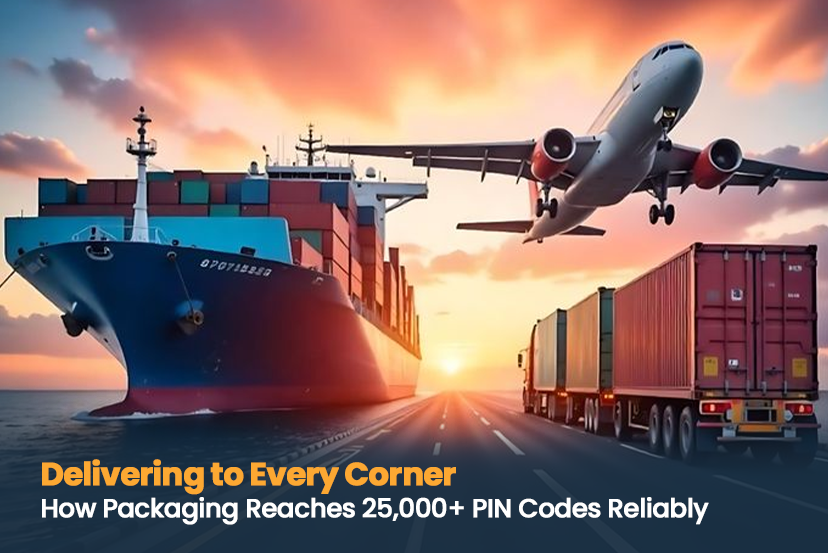
Delivering to Every Corner: How Packaging Reaches 25,000+ PIN Codes Reliably
Anyone who’s shipped a product across India knows the drill. Delivering across the country isn’t just about logistics-it’s a test of durability, planning, and real-world problem solving.
You’re not just shipping to metros with paved roads and proper addresses. You’re also reaching small towns, far-flung villages, coastal zones, hilly terrains, and places where the weather can flip in a day.
And somehow, some brands are doing this consistently-reaching over 25,000 PIN codes with minimal damage, delays, or customer complaints. The not-so-secret weapon? Smarter, more reliable packaging.
The Delivery Struggles No One Talks About
Let’s be real. Delivery failures are rare because the product didn’t leave the warehouse. The problems happen in transit.
Packages get dropped. They ride on bumpy roads in overloaded trucks. They sit in the rain outside a local depot. Labels peel off. Boxes cave in. Items shift and break.
Now imagine the same product has to survive this across 25,000 different locations. One-size-fits-all doesn’t work. And that’s exactly why packaging needs to be purpose-built for scale, diversity, and chaos.
How Packaging Makes (or Breaks) Nationwide Delivery
If you want to ship anywhere and everywhere in India without holding your breath every time a parcel leaves your warehouse, your packaging has to be more than just functional. It has to be dependable.
Strong outer packaging matters. Corrugated boxes with the right ply strength, protective layers at pressure points, and boxes that can handle stacking-these aren’t luxuries. They’re essentials when your shipment might be at the bottom of a truckload headed to a Tier 3 town.
Internal protection isn’t about stuffing in bubble wrap and hoping for the best. It means using inserts, trays, or padding that hold the product firmly in place, even if the box flips upside down or gets dropped from waist height.
Right-sizing also plays a big role. Oversized boxes invite damage because items move around too much. Undersized ones offer no protection. Packaging that’s tailored to the product size and shape improves both safety and efficiency.
Moisture control is another big one. Monsoon season doesn’t care about your delivery timelines. And in coastal areas, even a light drizzle or high humidity can mess with packaging adhesives, labels, or the product itself. Waterproof layers, sealable polybags, and humidity-resistant materials go a long way here.
Even your tape matters. Regular tapes may come loose in transit, especially in dusty or humid conditions. High-quality packaging tapes that seal tightly are a small investment that prevents big problems.
What Reliable Delivery Looks Like Behind the Scenes
Brands that consistently deliver across the country without issues do a few things differently.
They test their packaging against real-world scenarios. Not just lab tests, but actual shipping routes. They drop boxes, stack them, expose them to rain, and leave them in the sun. If the packaging survives that, it’s ready for the real world.
They don’t use the same packaging for every product. Electronics get custom foam inserts. Cosmetics get snug boxes to avoid rattling. Glassware gets cushioning that doesn’t shift around. The packaging adapts to the product-not the other way around.
They review and update packaging regularly. As the logistics network evolves, delivery partners change, and customer volumes grow, so should the packaging. What worked two years ago might be costing you returns today.
They also work with packaging partners who understand pan-India shipping. Vendors who know what a 7-day journey to Northeast India does to a cardboard box are better equipped to suggest the right materials and formats.
Common Delivery Issues Packaging Can Solve
Damaged goods aren’t just bad luck-they’re usually the result of under-engineered packaging. Weak boxes, loose interiors, or poor labeling lead to replacements, complaints, and refunds.
A wet label can mean a parcel gets lost in the system or is sent back. That’s a packaging issue, not a logistics one.
Melted or deformed products during summer? That’s preventable with heat-resistant or insulated packaging.
Pieces missing from the box? Usually because of movement inside or torn external packaging. Proper fitments and secure sealing solve that.
If you’re tracking a high rate of delivery failures, there’s a good chance packaging is playing a bigger role than you think.
What Scaling Delivery Really Involves
Reaching every corner of the country isn’t just about getting more orders or more vehicles. It’s about building systems that can scale without breaking. Packaging is one of the easiest systems to get right-and one of the costliest to ignore.
Good packaging reduces the need for repacking at hubs, speeds up sorting, prevents damage in manual handling, and minimizes returns. That means faster deliveries, lower costs, and happier customers-even in remote PIN codes.
Brands like Moglix Business treat packaging as a strategic function, not just a cost, tend to scale more smoothly and with fewer surprises.
Building Packaging That Reaches Anywhere
If you want to consistently deliver across 25,000+ PIN codes, the packaging has to be:
- Strong enough to survive real-world transit, not just warehouse handling
- Sized correctly so it’s efficient for both shipping and storage
- Resistant to rain, dust, and heat during long journeys
- Securely sealed and clearly labeled for fast, error-free sorting
- Adaptable by product category and region
This doesn’t mean overpacking or overspending. It means thinking smart and planning for real delivery conditions, not ideal ones.
Final Word
Smart packaging doesn’t just protect your product. It protects your reputation, your delivery timelines, and your bottom line.
Reaching 25,000 PIN codes isn’t impossible. But doing it consistently, without damage or delays, means treating packaging as part of the delivery system, not just the box it ships in.
When done right, packaging becomes your delivery partner. Silent, reliable, and always on time.
How Moglix can add value to new age startups & budding entreprenures in building and scaling their brands through packaigng

How Moglix can add value to new age startups & budding entreprenures in building and scaling their brands through packaigng
Moglix empowered India’s fastest growing investment firm redefine packaging for its fashion, home and beauty and personal care brands through in-bound packaging supply chain.Read More
Moglix empowered India’s fastest growing investment firm redefine packaging for its fashion, home and beauty and personal care brands through in-bound packaging supply chain.
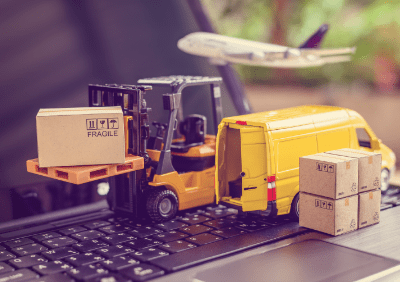
Moglix empowered India’s fastest growing investment firm redefine packaging for its fashion, home and beauty and personal care brands through in-bound packaging supply chain.
Moglix empowered India’s fastest growing investment firm redefine packaging for its fashion, home and beauty and personal care brands through in-bound packaging supply chain.Read More
Trend watch: Top 7 types of packaging materials that are industry favorites today
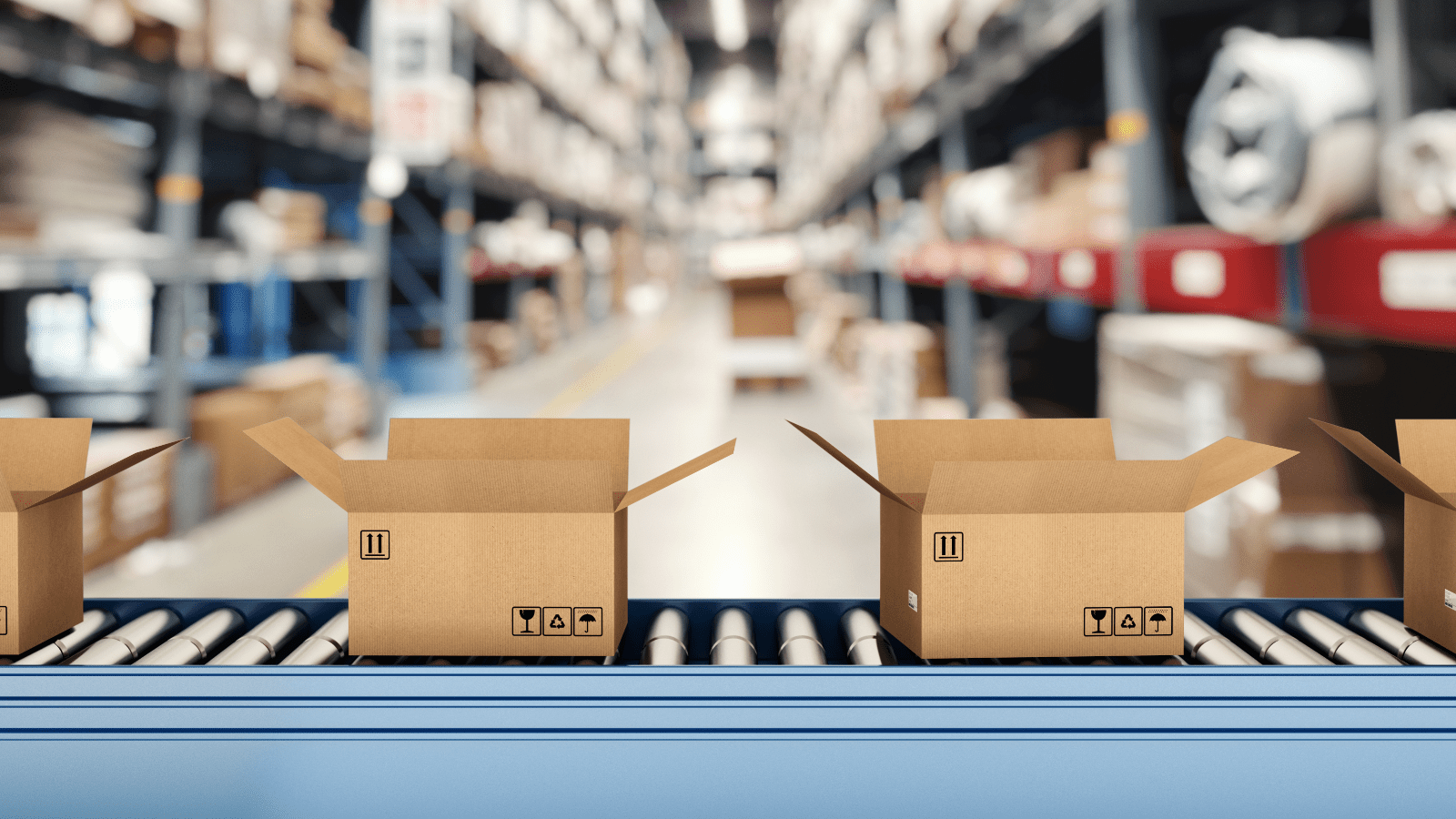
Trend watch: Top 7 types of packaging materials that are industry favorites today
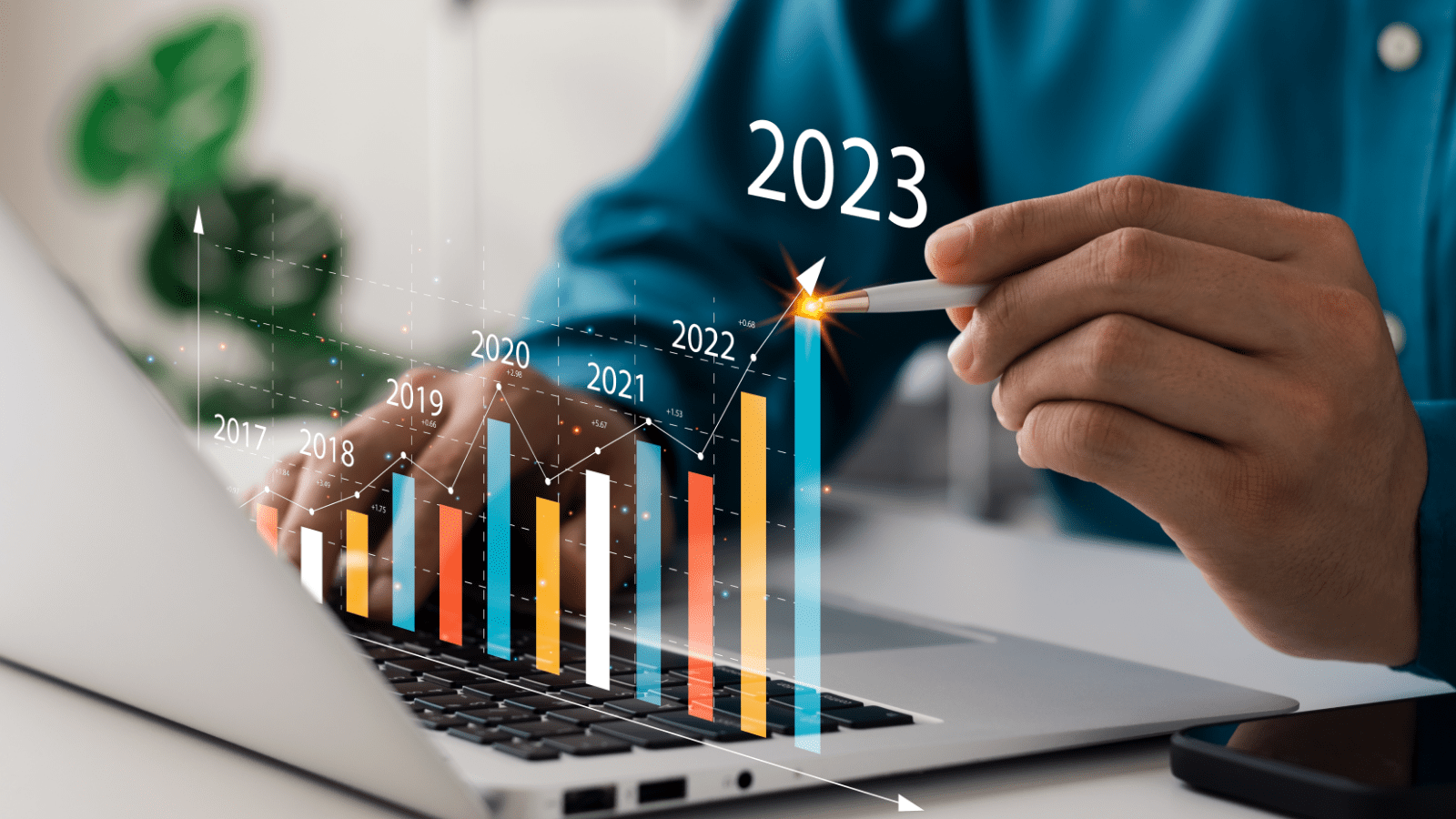
The global packaging market is one of the fastest-growing economic segments today. In India, too, the packaging industry — worth over $917 billion in 2019 — is growing at a CAGR of 2.8% and is expected to hit the $1.05 trillion mark by 2024. If your business operates in this dynamic market segment, it is imperative that you remain aware of what’s driving the packaging sector and what your peers are doing.
One such essential trend to watch is what packaging materials are the industry favorites in the current scenario. Here’s a closer look at the seven most common packaging materials businesses use today.
1. Paperboard boxes
Boxes made of paper and paperboard are among the most common types of packaging used today. Paperboard is available in different varieties like kraft paper and SBS paperboard. It is typically preferred by businesses in the food and beverage industry, although paper packing is also standard in transporting electronics, cosmetics, chemicals and even heavy goods.
2.Corrugated boxes
Valued at $70 billion in 2022, the corrugated packaging market is one of the fastest-growing segments in the industry. Since most corrugated boxes are entirely recyclable, this is one of our most sustainable packaging options. Corrugated packaging is suitable for various products like food, textiles, electronics, healthcare goods and more.
3.Plastic packaging
Plastic packaging is everywhere, from bottles and boxes to cups and bags. Data shows us that the global plastic packaging market is growing at a CAGR of 4.2% today. Despite this, plastic remains a global concern since it is highly unsustainable. It is why many companies prioritise using plastic-free packaging, or at the very least, recyclable plastic.
4.Rigid box packaging
A tad bit more luxurious than corrugated boxes and paperboard packaging, rigid boxes are around four times thicker. So, they are typically preferred for premium products like mobile phones, jewelry, watches, expensive electronics and other luxury goods. In addition to being sustainable, rigid boxes also offer superior product protection and brand value addition.
5.Metal packaging
The growth of e-commerce and retail, the rise in global Predominantly used in the food and beverage industry, metal packaging can be sustainable depending on the material used. Aluminum tops the list of sustainable metal packaging since it is easy to recycle and results in minimal wastage. Tin is also another sustainable packaging option in this category.
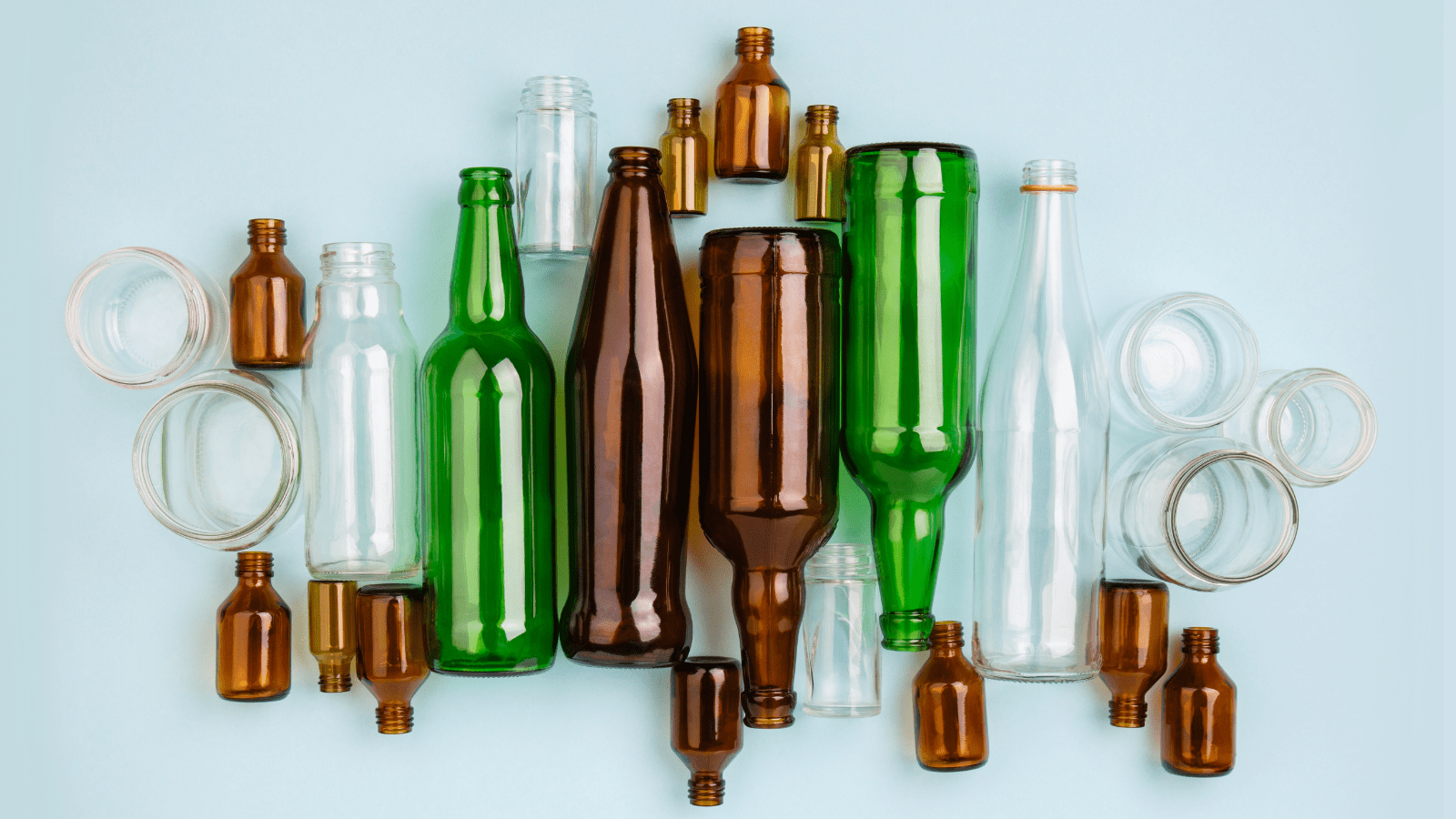
6.Glass packaging
Glass is also a sustainable choice for businesses looking to switch to plastic-free packaging. Best suited for premium food and beverage products, glass packaging is also preferred for other products like chemicals, medicines, cosmetics and more. But, on the flip side, it is pretty expensive and fragile.
7.Flexible packaging
Due to its ease and convenience, flexible packaging is quickly becoming one of the industry’s most preferred types of packaging. This kind of packaging is cost-effective, and rescues waste. It is made from pliable materials like paper, foil, coated paperboard or polymer films.
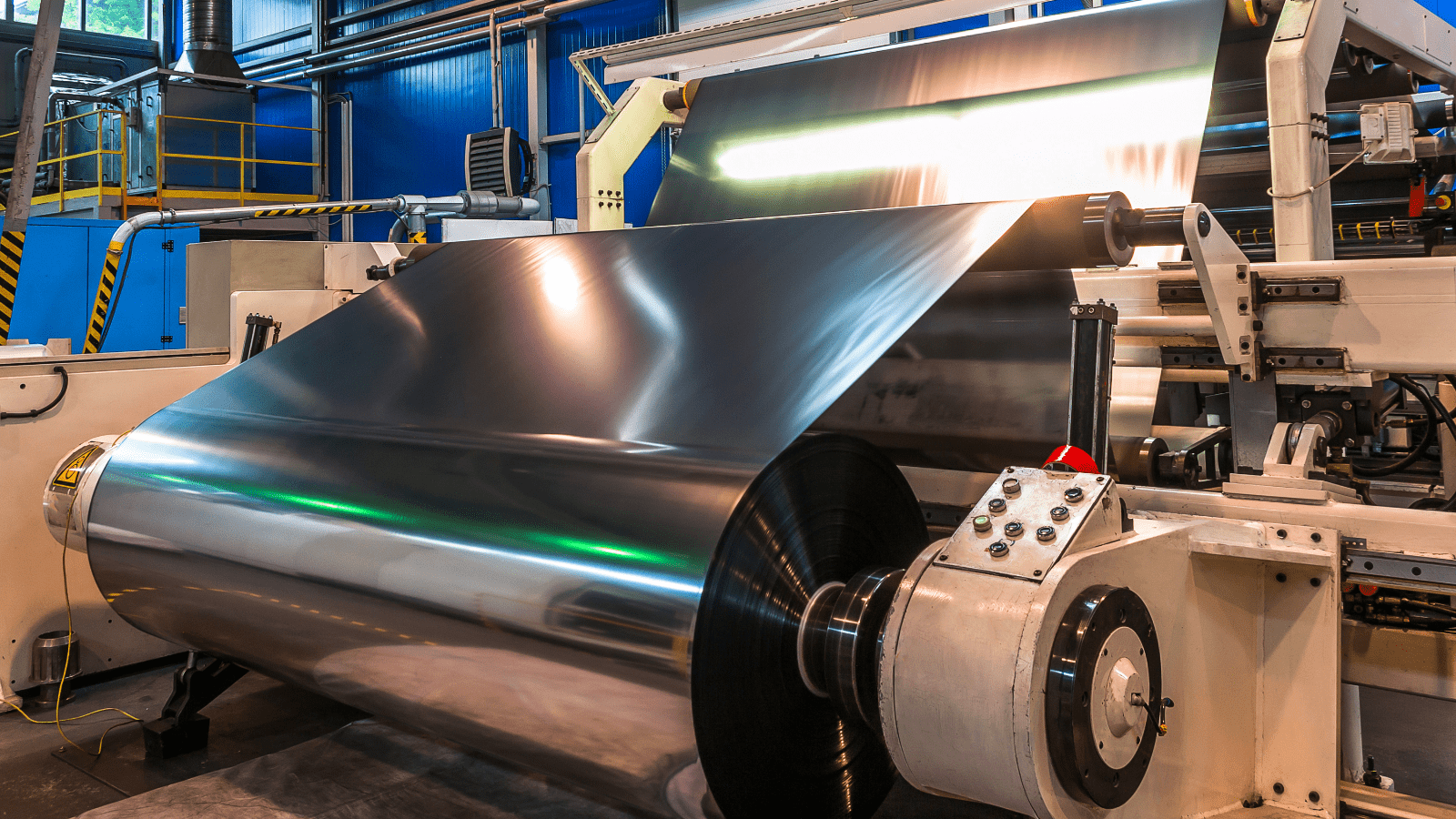
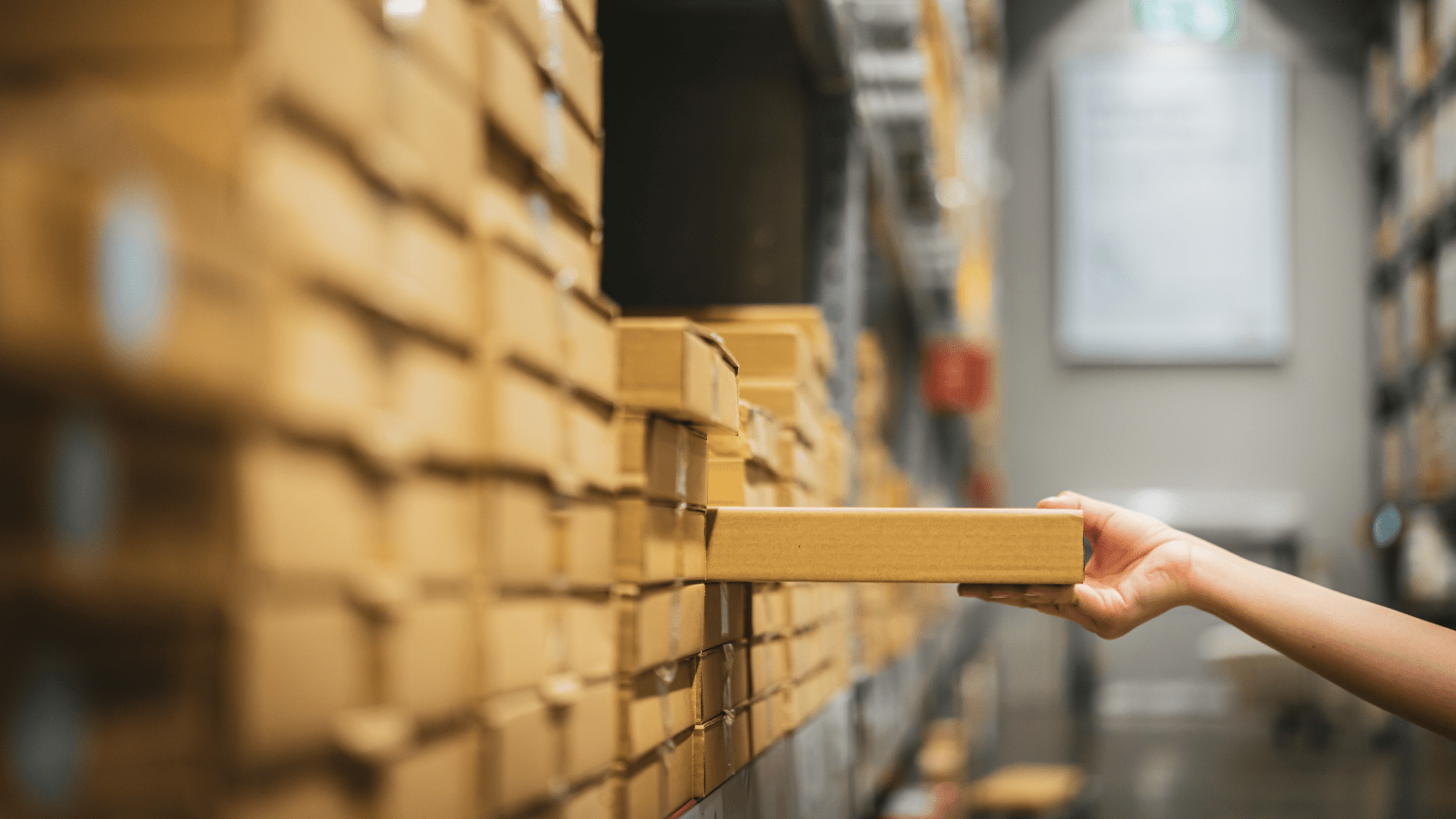
What packaging materials are you choosing today?
There’s no denying that it’s easy to opt for the most common packaging materials in the market. However, sustainable options like plastic-free and recyclable packaging are the need of the hour. And businesses keen on remaining at the top of the game over the long run need to strike the right balance between what’s easy and what’s right.
A competent packaging solutions provider like Moglix can help you make the right choice with innovative and competitive primary, secondary and tertiary packaging solutions. Visit our website to know more.
Moglix Enables India’s Largest food delivery services to transform packaging solutions ranging from primary to tertiary packaging material.

Moglix Enables India’s Largest food delivery services to transform packaging solutions ranging from primary to tertiary packaging material.
Moglix Enables India’s Largest food delivery services to transform packaging solutions ranging from primary to tertiary packaging material.Read More
Key trends molding the future of packaging
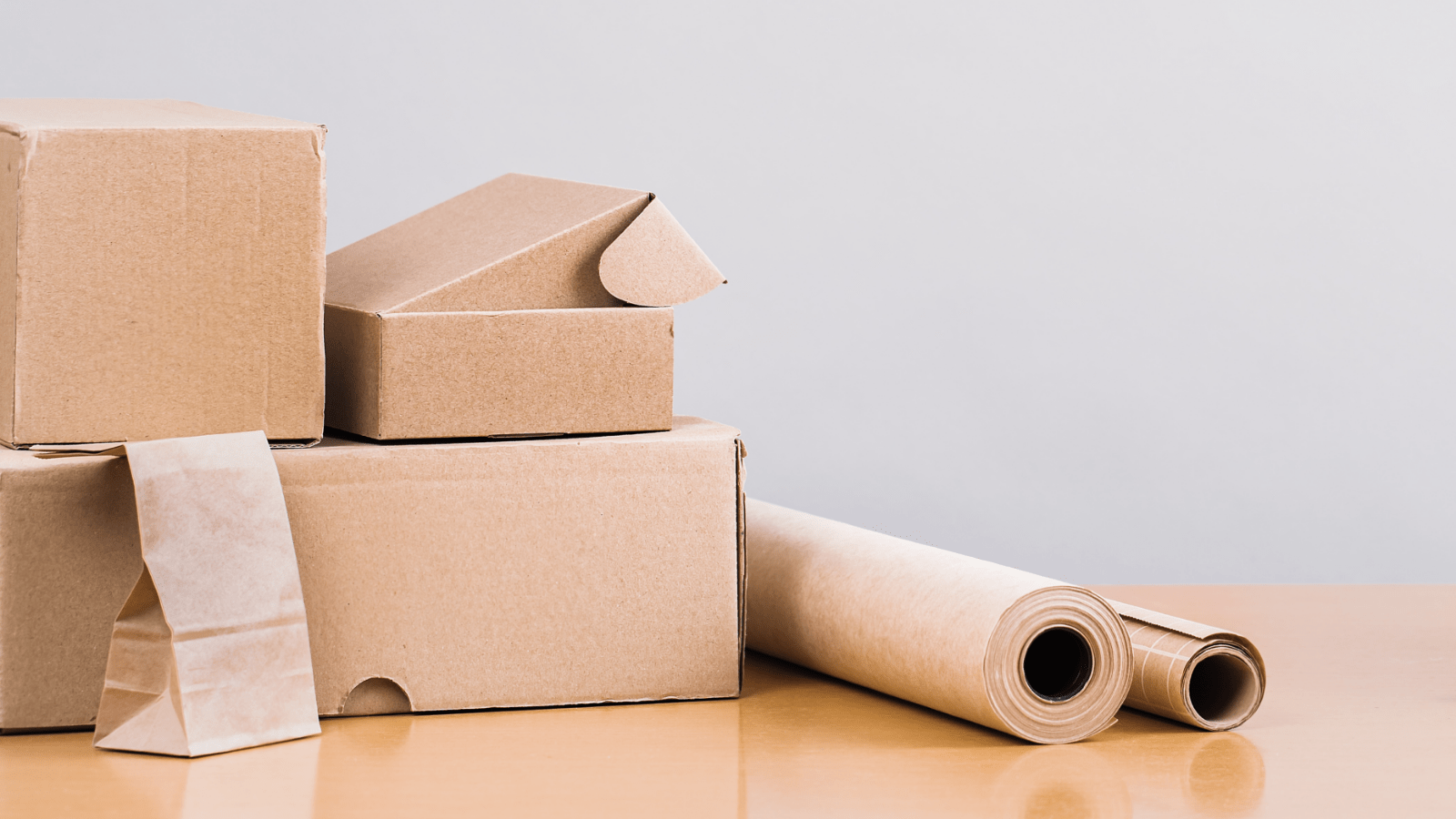
Key trends molding the future of packaging
On a global scale, the packaging industry is one of the fastest-growing economic segments today. A recent study by the reputed market research store ‘Research and Markets’ reveals that the packaging sector could grow by over $220 billion by 2027. Looking back at the decades, McKinsey & Company has identified three defining eras in the global packaging industry. The first two — from 2000 to 2020 — were marked by substrate shift changes and changing consumer behavior.
The current era of packaging, however, is characterized by extensive digitization and sustainable packaging. Therefore, businesses in the packaging sector need to be aware of the key trends driving this industry phase, so they can stay ahead of the curve by adopting the necessary best practices.
4 key trends shaping the future of packaging
Here is a preview of the top trends driving primary and secondary packaging today.
1. Sustainability at the forefront
Businesses today are starting to prioritize sustainability and environmental awareness. As a recent global survey by McKinsey & Company revealed, around 75% of packaging purchasers are committed to choosing sustainable options. To remain in the game, organizations need to align their processes with the principle of sustainability and take active steps to become — and remain — environmentally friendly.
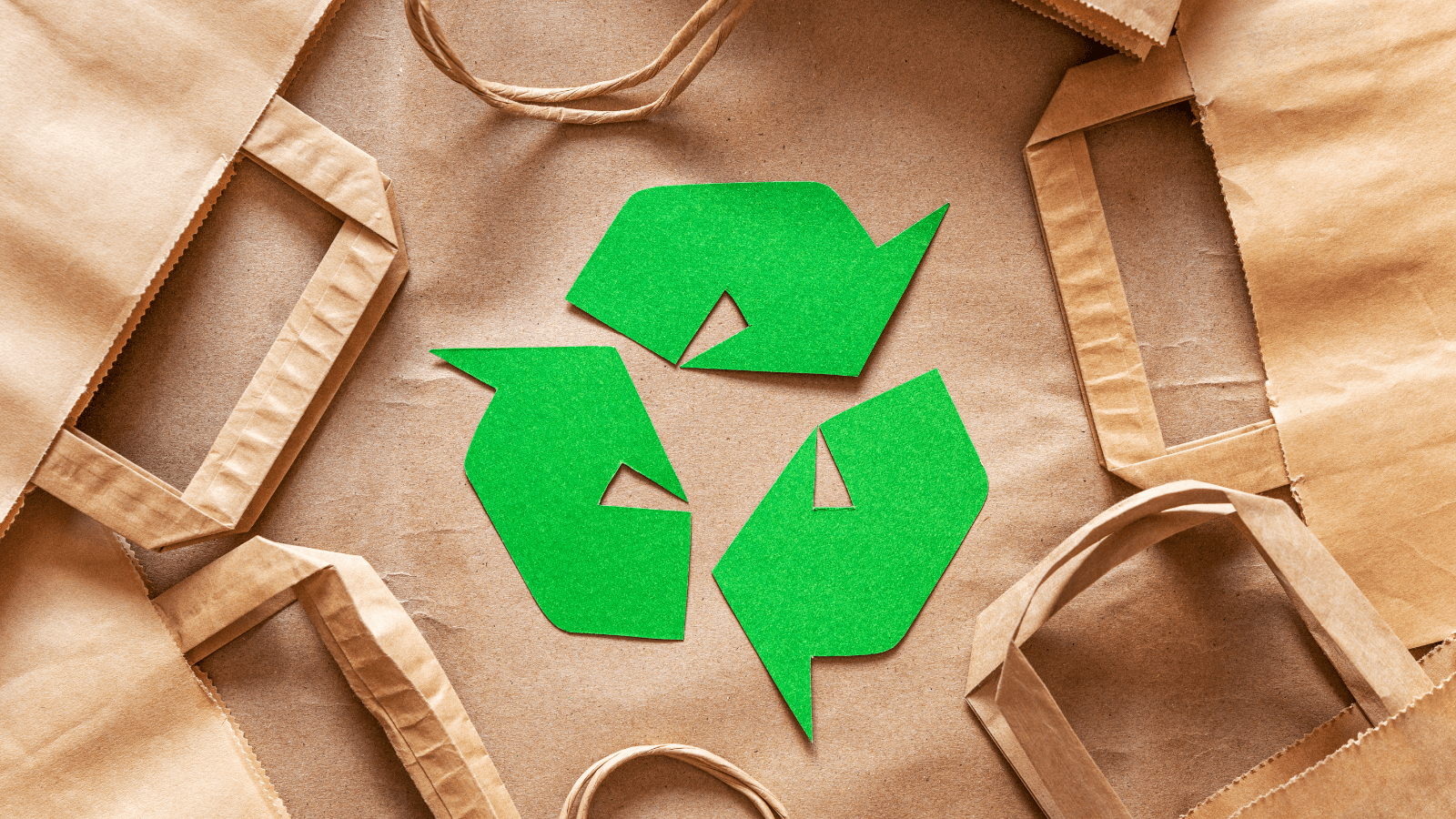
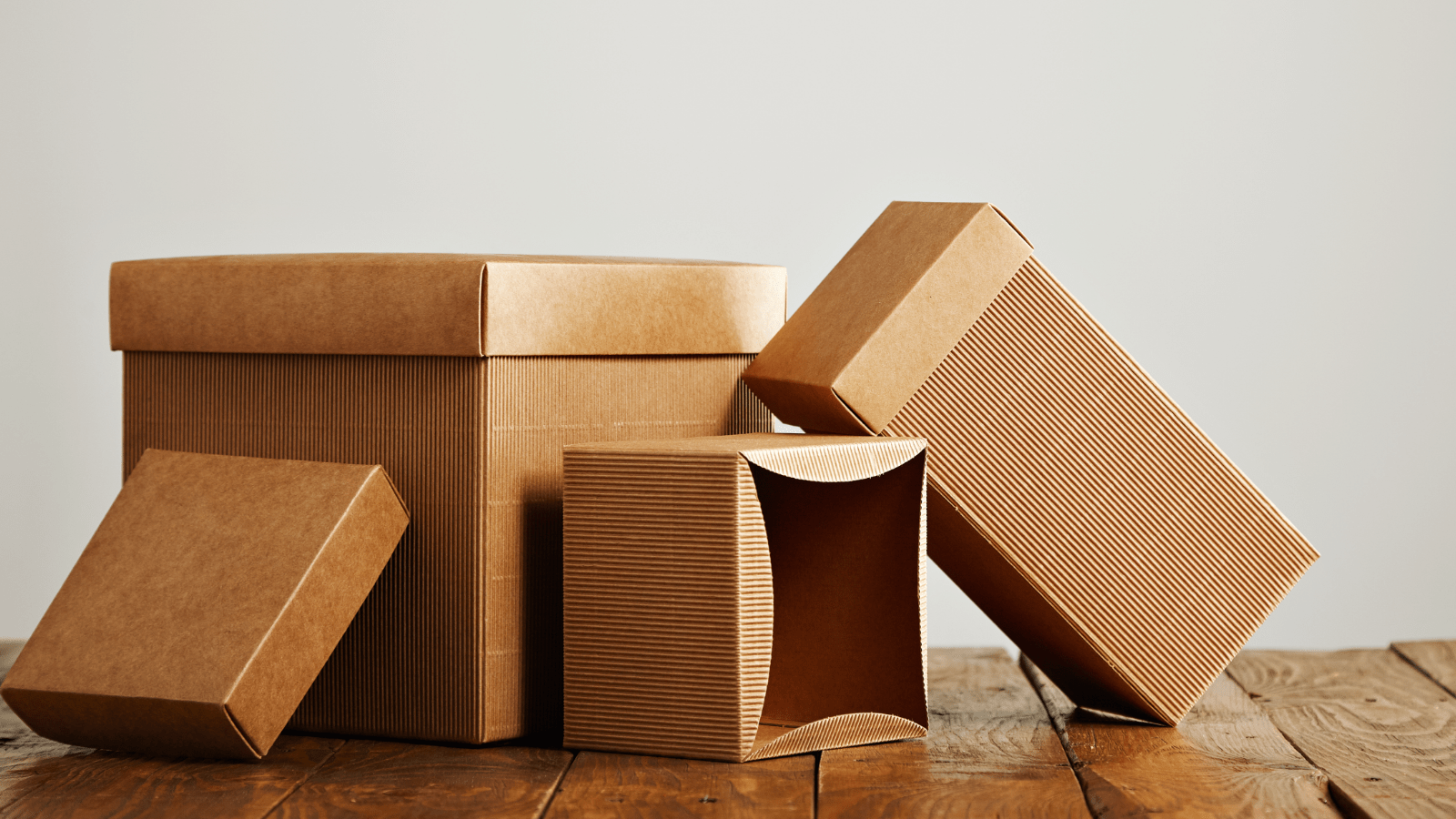
2.Personalized packaging
Personalization, which can be easily integrated into both primary and secondary packaging, is another increasingly trending concept in the 21st century. With a personal touch becoming even more essential after the pandemic, it’s no surprise that the global personalized packaging market hit the $32.57 billion mark in 2021 and is expected to grow at a CAGR of 5.28% by 2030.
3.Increased preference for flexible packaging
Flexible packaging is convenient, easy to store, and highly practical. When done right, it has better shelf appeal, offers improved cost economics, and is well-suited for eCommerce. Owing to its many advantages, flexibility is becoming another trending packaging requirement in the current era. Businesses can also marry the goal of sustainability with flexibility by choosing materials that check both these boxes, like paper, fabric and recyclable plastic.
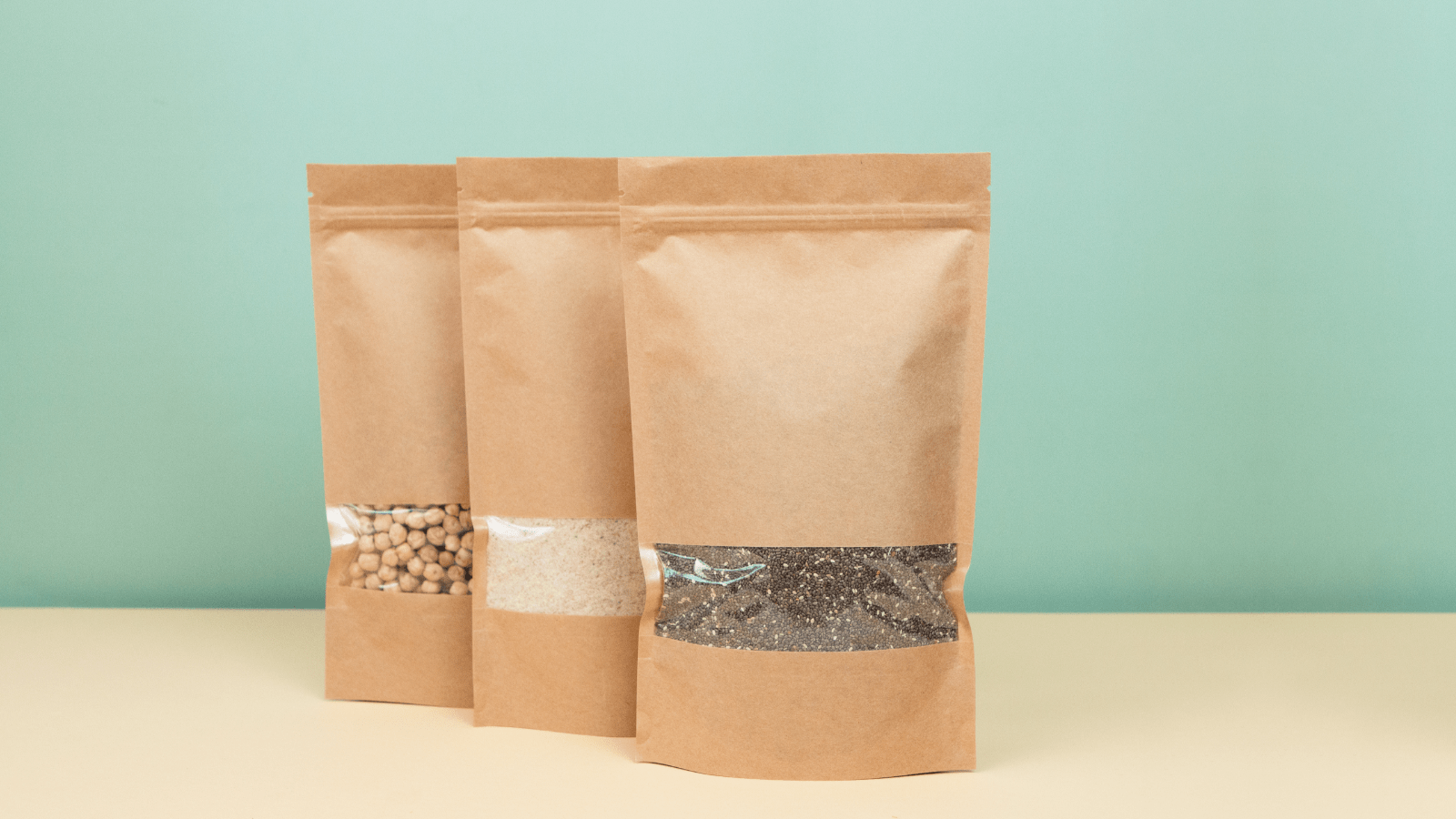
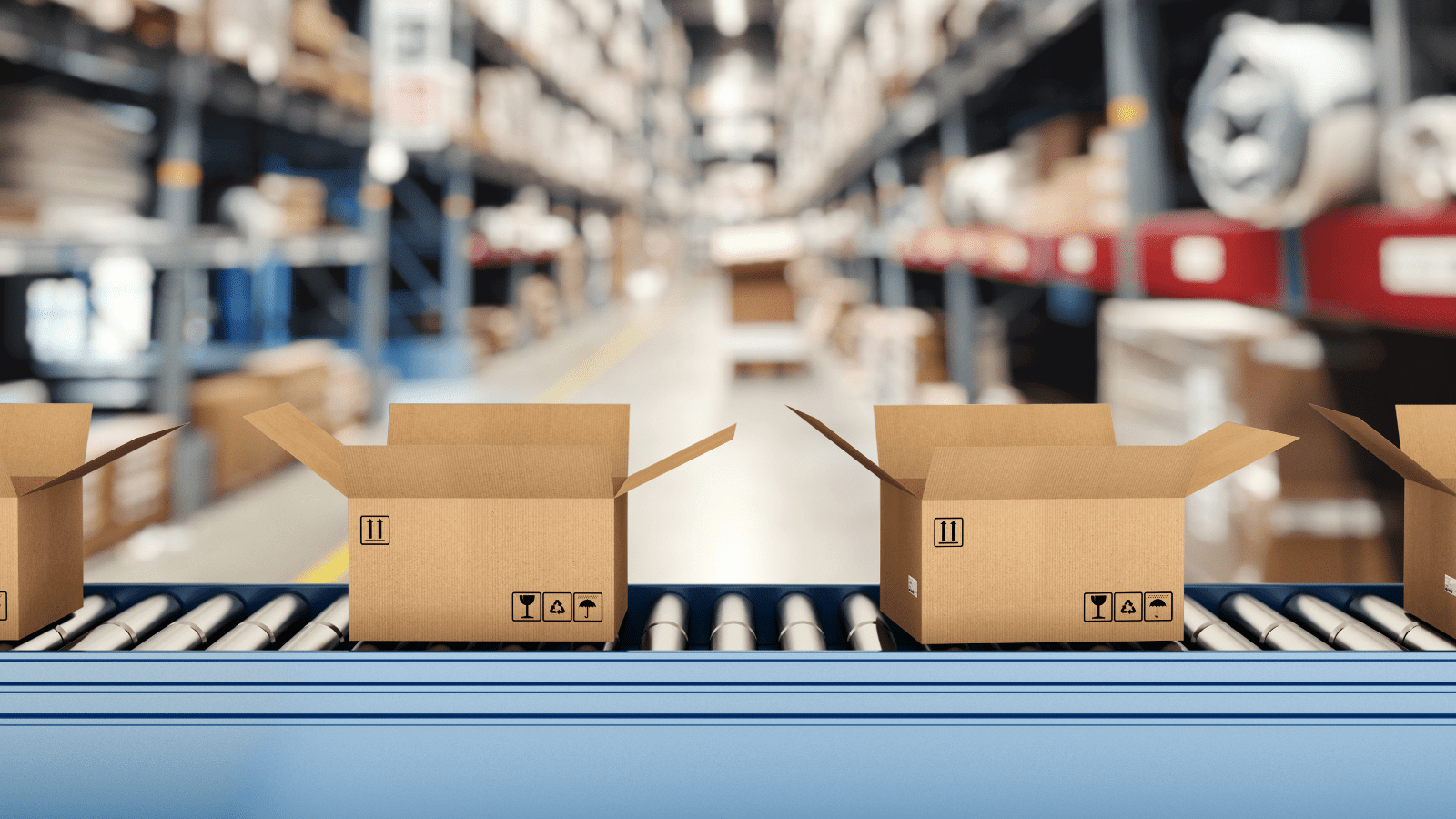
4.Smart packaging solutions
Digitization is changing the packaging sector, and the rising trend of innovative packaging solutions is proof of this. Intelligent packaging solutions like biosensors, temperature and freshness indicators and even data carriers like barcodes and RFIDs are revolutionizing packaging as we know it today. Businesses that keep pace with these trends will likely have a head start in the race to the future.
5.Focus on smart and reliable export packaging
The growth of e-commerce and retail, the rise in global food demand, globalization, and the expansion of design and innovation in the product lines of well-known multinational firms all impact the expansion of global trade. Therefore, we may expect to see a trend that focuses on creating smart, reliable, cost-effective export packaging in the coming years.
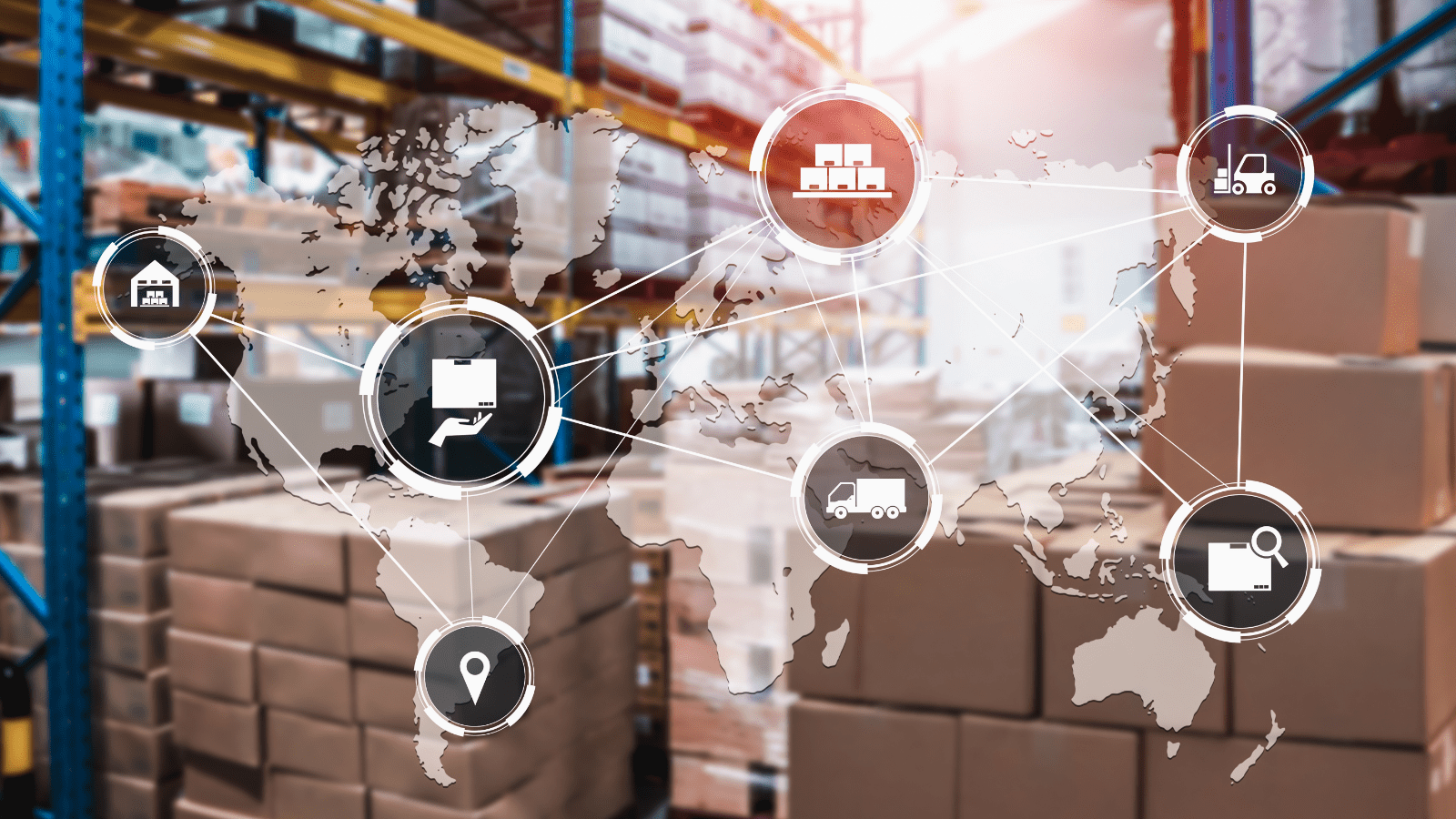
Want to keep up with the future? Choose the right packaging solutions provider today.
The right packaging solutions provider can help your business easily navigate the new era of sustainable packaging. Choose Moglix to get the advantage of comprehensive sustainability and compliance solutions, quality adherence, vendor consolidation, and inventory management. Visit our website to learn more.
